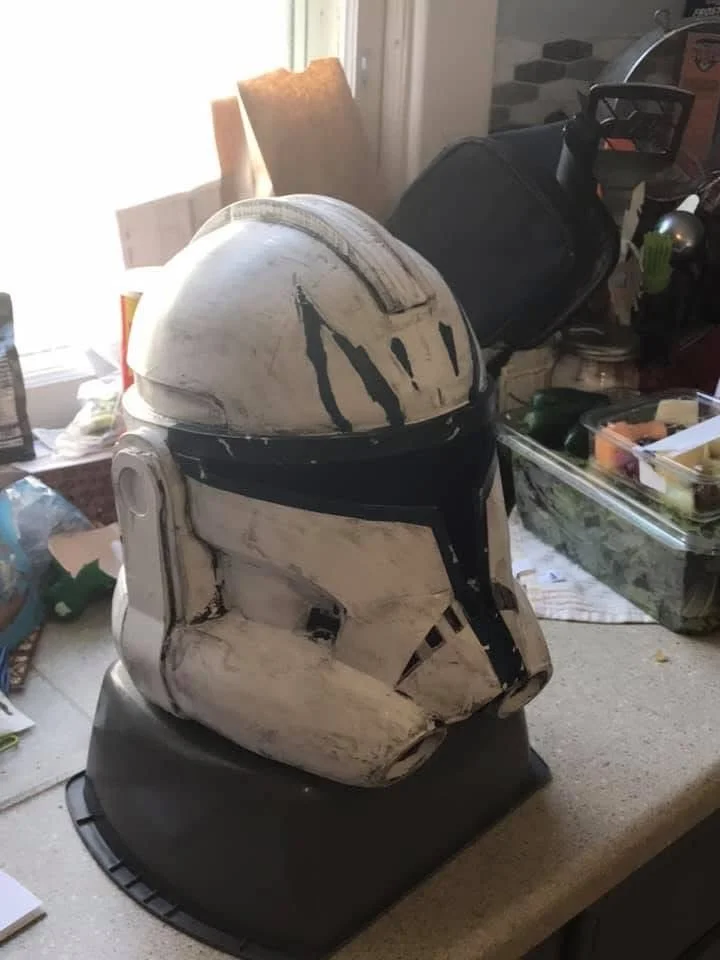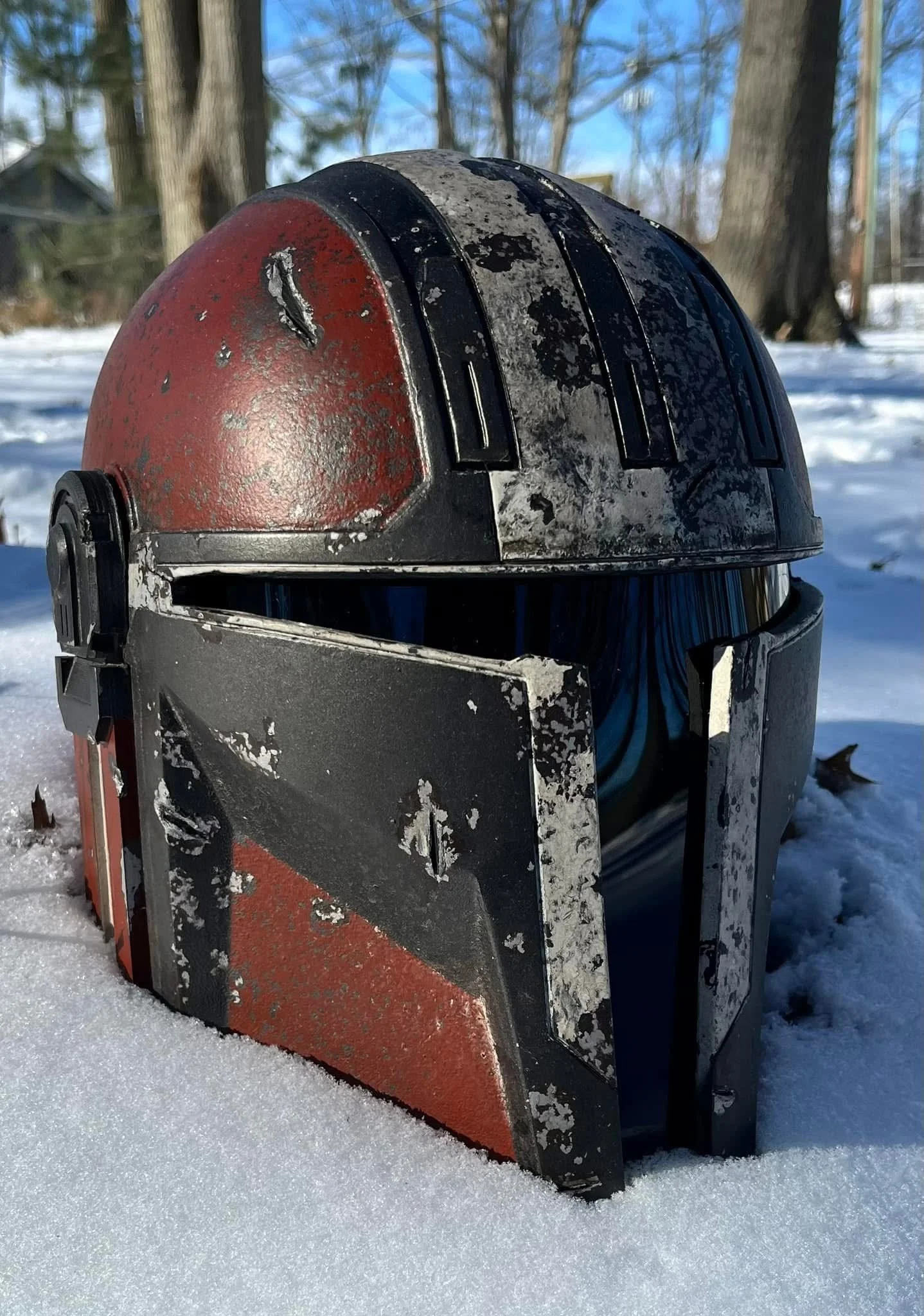Why 3d PRinted Cosplay?
Science Fiction has been my go-to escape ever since I was a little kid. Whether it be in the form of a movie, book, or video game, I love the way science fiction brings modern-day issues to light in ways that allow and encourage society to reflect and question the modern world around us.
The other reason that I love science fiction is that its world-building is second to none. Every story exists in a well-thought-out and highly detailed universe where the tiniest details matter. Every faction, ship, piece of technology, and character helps build a richer and deeper story.
The Imperial Star Destroyer, being a key symbol of the evil Galactic Empire, astounded audiences the first time they watched episode IV. I was no different, but I longed to see the inner workings of such a vessel. I wanted to see the crew quarters, the hangar, and cargo bays. I wanted deeply to see the shipyards where these amazing vessels were created. Luckily, I wasn’t alone, and many fans and dedicated authors spent countless hours providing that extra bit of detail that just helped make the universe that much more realistic. Details like these were provided in basically every series I was able to get my hands on, from Star Trek to The Expanse and countless more in between.
When I entered college, I became aware of a group of people who took their love for these franchises to the next level, and they were called Cosplayers. These individuals not only experienced these worlds that I loved but created their own characters, with deeply thought-out backstories, that lived within these universes. I desperately wanted to be a part of this group of people. However, I lacked two things: the artistic skill to do what they did and the courage to do what they did.
All my life, I have struggled with anxiety. I spent a great deal of my life not knowing why going to new places, meeting new people, and trying new things would make me feel so uncomfortable that I would often find some excuse to isolate myself and justify not doing things that, deep down, I truly wanted to do. I learned ways to cope with my anxiety as I got older, but they didn’t always feel “right”. I never truly felt comfortable opening myself to a therapist; I had tried several different medications to help “regulate” my anxiety, but many of them had just as many side effects as living with my anxiety.
As time went on, I tried to find a way to pursue my dreams of cosplaying. I lacked the funds, or rather the anxiety of spending hundreds of dollars on a hobby for myself that I could potentially fail at, which stopped me from buying a first-generation 3D printer. So, I began my journey into cosplay with Pepakura.
Pepakura took the armor, helmets, and props of my favorite franchises and broke them down into shapes I could cut out of paper and glue together, which I then hardened and painted. While many have found success with this method, I did not. It wasn’t for lack of effort; I just didn’t have the experience and skill set at the time. However, I noticed during the hours of cutting out Pepakura patterns with an exacto-knife that my anxiety and depression symptoms subsided, and I often felt more relaxed and confident. In 2016, we welcomed our first child, Peter, into the world, and the time/energy I had for a serious crafting hobby took a back seat to spending time with him.
A few years later, in 2019, we welcomed our second child, Gwendolyn, into the family, and I continued to watch the amazing things that crafters and cosplayers around the world made. I was envious, sure, and I set out for a plan to start saving money to buy my first 3D printer. 2019 also became a rather difficult year for me and my family, as my mother passed away unexpectedly. I still have trouble talking about her death and being honest about my own journey in dealing with the trauma and grief that resulted from it.
After we settled my mom’s estate, I talked with my wife, Bonnie, about how I wanted to use some of that money to buy a 3D printer so I could pursue this new hobby. Luckily, she said yes. Not that she would have told me no, but she understood that my anxiety wouldn’t let me spend that kind of money on myself. In fact, she was the one to press the “order” button because I would have talked myself out of it.
I started my journey with a brand-new Ender 5 series 3D-printer and dived headfirst into the world of 3D-printing. After learning the basics of printing, which frankly has a much steeper learning curve than you might think, I started my first “big project,” a Captain Rex helmet from Star Wars: The Clone Wars.
The clones of Star Wars are to me the epitome of great world building; each of these characters is distinct, well thought out, and are true individuals, and while not expressly created, they are pivotal to the overall story even if they never interact with the “main characters” of the Star Wars universe. Captain Rex and Arc Trooper Jesse are hands-down two of the best characters ever created in science fiction.
I learned many things during this first project. First, I learned how to take a complex, multi-part print, and print it, join it, smooth it, paint it, and weather it. Or at least I thought I did. I remember finishing that helmet and feeling so proud of myself. Looking back at it now, I cringe. The join lines are rough, the paint is sloppy, and the weathering is weak. To me, though, it was amazing.
I also learned that not all printing files are created equal. While this is still a great file that someone worked hard to create, it was less than perfectly accurate. It was also less than easy to work when it came to printing. I believe this model broke down into something like sixteen individual pieces.
While it may have been “rough,” I was super happy and proud of what I had managed to create, but I realized I wanted to be better. So, I turned to the internet and started researching and taking notes from numerous YouTube videos, blogs, and studying the works of other famous cosplayers, and I started applying these techniques to the projects that followed and gradually, my projects began to improve.
My most recent attempt at the same helmet came after years of practice and studying. I bought more accurate files, I learned how to process my prints better, and I practiced my painting skills. I also learned to ask for help and overcame my imposter syndrome and was able to help a few people, in countless groups on social media that were filled with people who were trying to do exactly what I was doing – bring their dreams to life in the best way possible.
I quickly realized my passion and hobby had one big drawback. All my projects took up a lot of space. I quickly filled the rooms of my house and my desk at work. I wanted to keep making these creations, and eventually I found people on social media who were interested in what I was able to do.
At first, I offered to print helmets for other people to finish on their own, as 3d-printers were still uncommon. A few asked me to take it a step further and prepare their pieces for painting, which is time-consuming and tedious, but is also the part I find to be the most relaxing of the entire process. I have even had the pleasure of helping a few individuals bring their dream characters to life.
This Foreman helmet, designed by Alterego Armory, now resides with a good friend of mine in New Jersey, who put his faith in some random guy he met on a social media post to help bring his Mandalorian dreams come true.
This hobby has encouraged me to push myself in ways I never thought possible. I continue to push myself to improve my technique in model making. I have self-taught myself to design my own products in Blender, and I hope to tackle the hurdle of learning to sew so I can make flight suits, flak vests, and other cosplay soft goods. I am far from perfect, and I can direct you to any number of cosplayers and model makers who are better than I am, but I do put my heart and soul into every piece I make.


